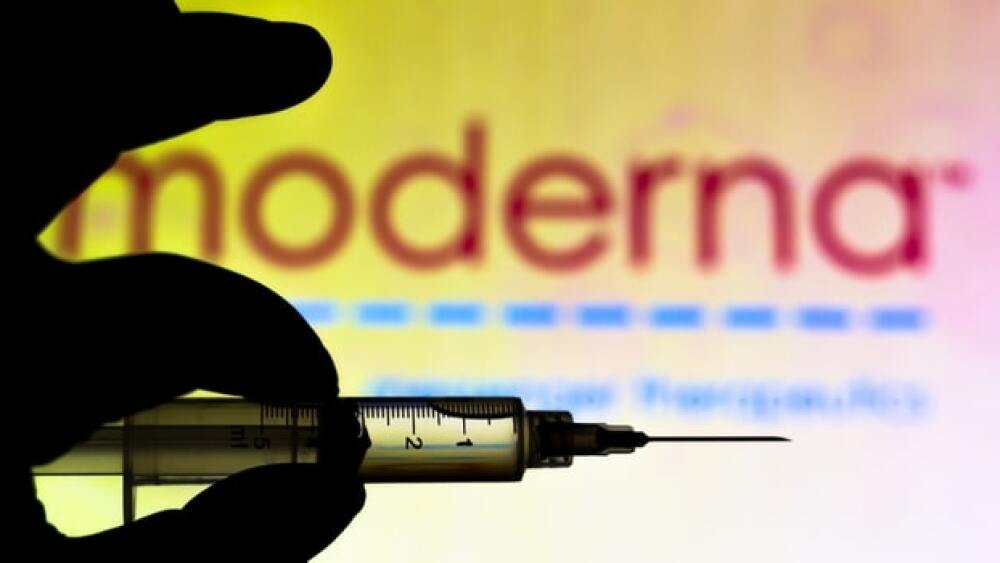Only a week after Pfizer and BioNTech’s preliminary data readout of its COVID-19 vaccine suggested a 90% efficacy rate, Moderna reported interim efficacy data for its vaccine of 94.5%.
rafapress/Shutterstock
Only a week after Pfizer and BioNTech’s preliminary data readout of its COVID-19 vaccine suggested a 90% efficacy rate, Moderna reported interim efficacy data for its vaccine of 94.5%. This is particularly excellent news given the surge of the disease and the distribution difficulties surrounding the Pfizer-BioNTech effort.
Both of these vaccine candidates require two doses about 28 days apart. The Pfizer-BioNTech vaccine requires storage at about -94 degrees F, which requires specialized freezers. The Moderna vaccine is stable at 36 to 46 degrees F, about the temperature of a standard home or medical refrigerator, for up to 30 days and can be stored for up to six months at -4 degrees F.
If both of these vaccines receive emergency use authorization (EUA) from the U.S. Food and Drug Administration (FDA) in the upcoming weeks, it will provide health care providers with flexibility and more manufacturing capabilities.
Moderna’s Phase III trial underwent its first independent, interim data analysis conducted by a National Institutes of Health (NIH)-appointed Data Safety Monitoring Board (DSMB). The DSMB informed Moderna the trial had met the statistical criteria in the study design for efficacy, demonstrating efficacy of 94.5%. The COVE Phase III trial enrolled more than 30,000 patients in the U.S. and was being run in collaboration with the National Institute of Allergy and Infectious Diseases (NIAID) and the Biomedical Advanced Research and Development Authority (BARDA).
The primary endpoint of the trial was based on analysis of COVID-19-positive cases confirmed two weeks after the second vaccine dose. The first interim analysis was built on 95 cases, with 90 cases of positive COVID-19 in the placebo group compared to five cases seen in the vaccinated group.
The secondary endpoint looked at severe cases of COVID-19 and included 11 severe cases in the interim data analysis. All 11 were in the placebo group, zero in the vaccine group.
There was a diverse mix of patients in the positive COVID-19 cases, including 15 people aged 65 and older, 20 from diverse communities, including 12 Hispanic or LatinX, four Black or African Americans, three Asian Americans, and one multiracial.
As in the Pfizer-BioNTech group, they expect the efficacy level may change as more data is accrued.
At this time, the Moderna vaccine appears to have a good safety profile with no significant safety concerns. The vaccine was generally well tolerated. Most adverse events were mild or moderate, with Grade 3 (severe) events coming in at 2%, typically pain at the injection site after the first dose and fatigue, achiness, joint pain, headache, and redness at the injection site after the second dose. They were typically short-lived.
“There is a pivotal moment in the development of our COVID-19 vaccine candidate,” said Stephane Bancel, Moderna’s chief executive officer. “Since early January, we have chased this virus with the intent to protect as many people around the world as possible. All along, we have known that each day matters. This positive interim analysis from our Phase III study has given us the first clinical validation that our vaccine can prevent COVID-19 disease, including severe disease.”
Based on the data, Moderna plans to submit for an EUA in the coming weeks, as well as to submit to other global regulatory agencies. The company believes it can have about 20 million doses of the vaccine, mRNA-1273, ready to ship in the U.S. by the end of the year. It also believes it can manufacture 500 million to 1 billion doses globally in 2021.
Pfizer-BioNTech have indicated they should be able to manufacture up to 50 million doses, enough for 25 million people, by the end of the year and up to 1.3 billion in 2021, or enough for 650 million people.
Combined, the two groups may be able to dose 35 million people starting by the end of the year.
“It’s extremely good news,” said Anthony S. Fauci, director of NIAID, who was one of three people briefed by the DSMB on Sunday morning. “I describe myself as a realist, but I’m fundamentally a cautious optimist. I felt we’d likely get something less than this. … I said certainly a 90-plus-percent effective vaccine is possible, but I wasn’t counting on it.”
Bancel noted that one of the most consequential aspects of the data was the vaccine’s apparent ability to prevent severe disease.
“In this pandemic, what has been awful from a public health standpoint, an economic standpoint, is the worry people have to get so sick they have to go to the hospital—so sick they have to get to the ICU and have a high risk of dying,” Bancel said. “If a [vaccine] could prevent 95% of people to not get disease, but to not get severe disease, that would be a gamechanger: the impact on hospitals, the impact on people’s psyche and the impact on deaths.”
The company indicates it will not apply for an EUA until there are 151 cases of COVID-19 in the trial. Earlier analysis had suggested that might not happen until early 2021, but with the current surge of the disease in the U.S. and globally, Bancel believes they will reach the endpoint in seven to 10 days. And if so, they have enough safety data to apply for an EUA before Thanksgiving. Bancel believes they might be able to begin dosing people at high risk in the second half of December.
A third group, AstraZeneca and the University of Oxford, may have data before the end of the year as well. In the U.S., the next closest program is probably Johnson & Johnson, which isn’t expected to report actionable data until late in the first quarter. Unlike the Pfizer-BioNtech and Moderna vaccines, J&J’s requires only a single dose.





